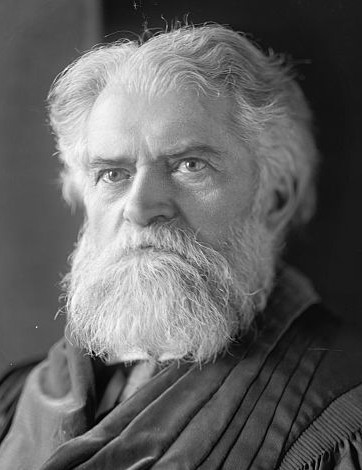| BLOG |
Carl McTague
mathematician, composer, photographer, fiddler |
Two Favorite Inventions
The tandem bicycle & player piano. This beautiful tandem [named Magnificient, after la Bête’s horse le Magnifique in Jean Cocteau’s La Belle et la Bête (1946)] was designed by Benno Bänziger, whose designs combine European sensibility with California hot rod style. [He grew up in the Swiss embassy in West Berlin obsessed with all things Californian.]
For some excellent player piano music, hear me on the radio playing recordings of the player piano études of my hero Conlon Nancarrow (1912–1997), sent to me by composer and Nancarrow champion Charles Amirkhanian, after I sat next to him by chance at a Nancarrow festival at the Southbank Centre in London in 2012.
A week after my radio appearance, at Eastman House in Rochester, I met and shook hands with Keir Dullea, who played astronaut [“I’m afraid I can’t do that”] Dave Bowman in Stanley Kubrick’s 2001: A Space Odyssey (1968). At the film’s climax, Bowman deactivates HAL’s circuits as HAL sings “Daisy Bell (Bicycle Built for Two)”,
 the first song ever sung by a computer—an IBM 704 at Bell Labs in 1961. [The song’s musical accompaniment was programmed by another hero, computer music pioneer Max Mathews.]
the first song ever sung by a computer—an IBM 704 at Bell Labs in 1961. [The song’s musical accompaniment was programmed by another hero, computer music pioneer Max Mathews.]
Daisy, Daisy,
Give me your answer, do!
I’m half crazy,
All for the love of you!
It won’t be a stylish marriage,
I can’t afford a carriage,
But you’ll look sweet upon the seat
Of a bicycle built for two!
After deactivating HAL, Bowman makes his cinematic & enigmatic descent onto the monolith—a descent inspired, I conjecture, by Berton’s descent to Solaris in Stanisław Lem’s 1961 novel—to the soundtrack of Atmosphères (1961) by György Ligeti, who did much to promote Nancarrow and whose later piano études were inspired by his. [Andrei Tarkovsky, in his 1972 film, transforms the same descent into a pastiche of allusions to Pieter Bruegel the Elder’s Hunters in the Snow (1565) and Rembrandt’s Return of the Prodigal Son (1669)—or, rather, transforms these allusions into the surface of Solaris. Abbas Kiarostami’s final film 21 Frames (2017) is, incidentally, a meditation on the same Bruegel.]
The Standing Stones of Stenness
Possibly the oldest henge in the British Isles – the Standing Stones of Stenness in Orkney, Scotland. The Stenness Watch Stone is visible in the distance. The Ness of Brogdar, Ring of Brogdar, Maeshowe, and Skara Brae are nearby but not visible.
Compare my photo with the following still from Powell & Pressburger’s first collaboration, The Spy in Black (1939).
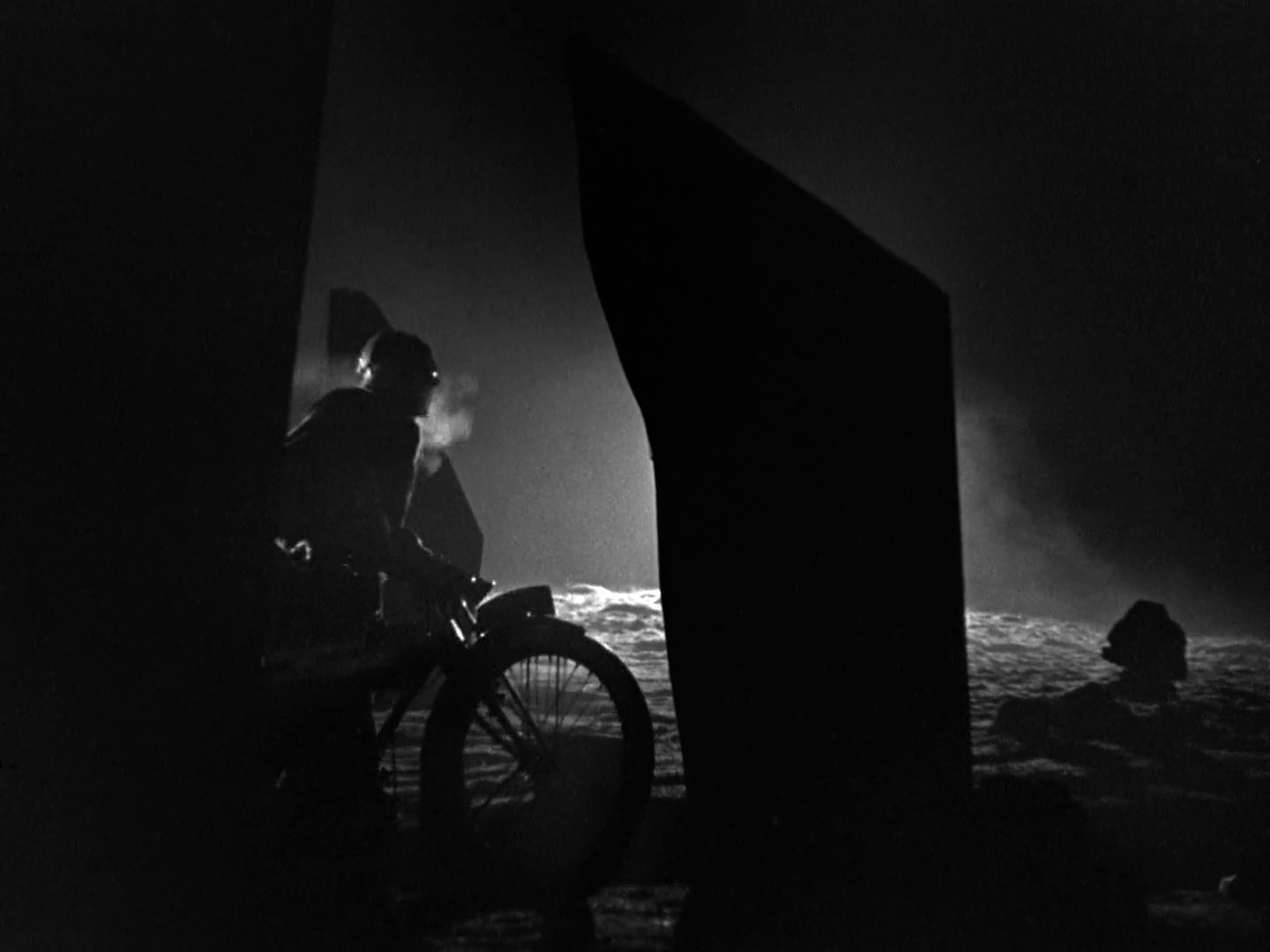
In it Conrad Veidt is sneaking with a motorcycle between moonlit standing stones in Orkney, on his way from his U-boat near The Old Man of Hoy to a clandestine rendezvous in a house overlooking the British Grand Fleet in Scappa Flow.
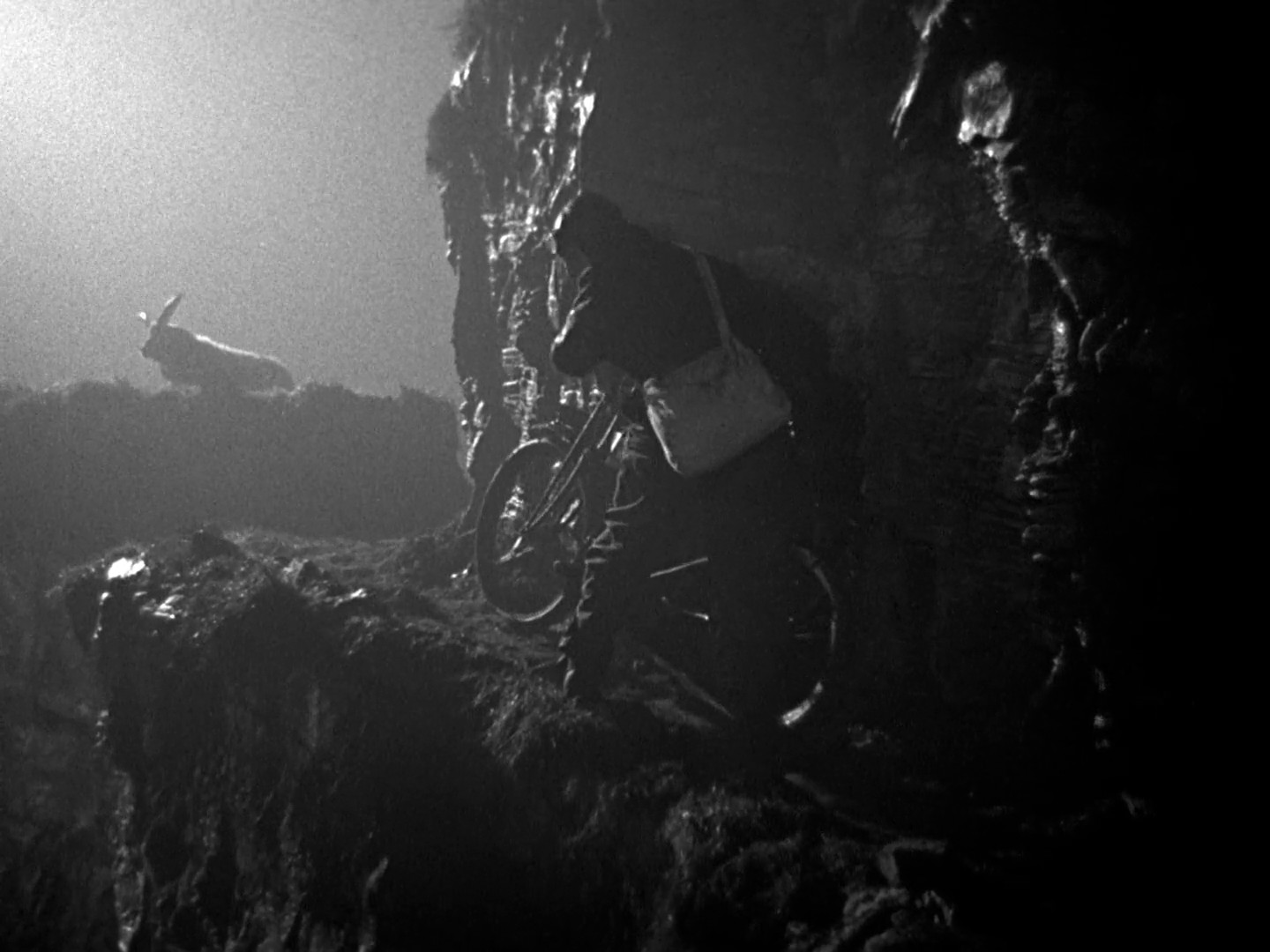
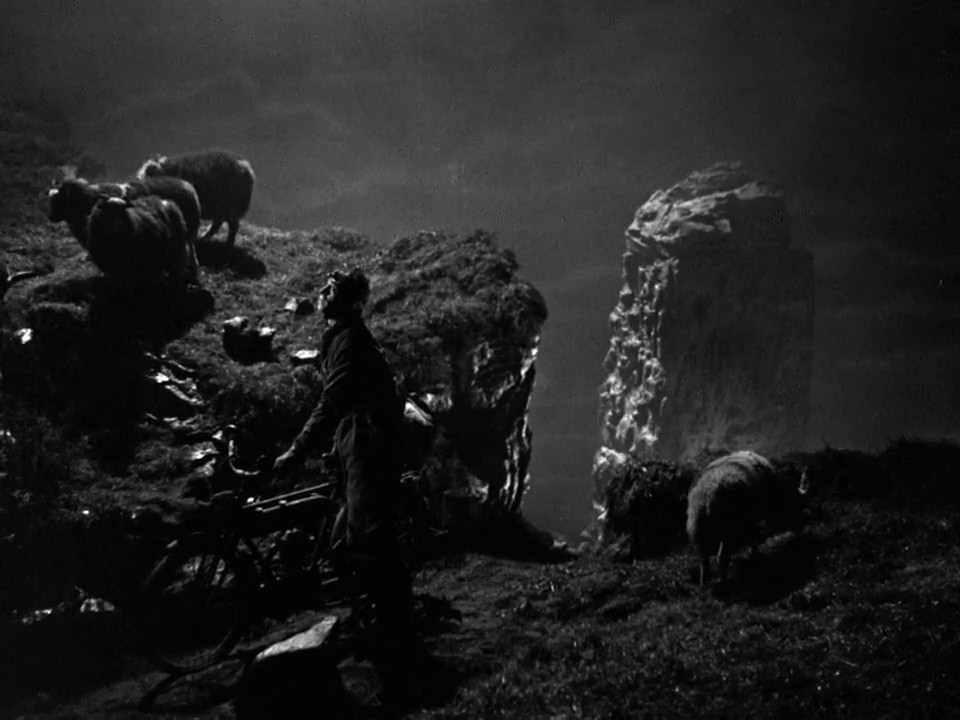
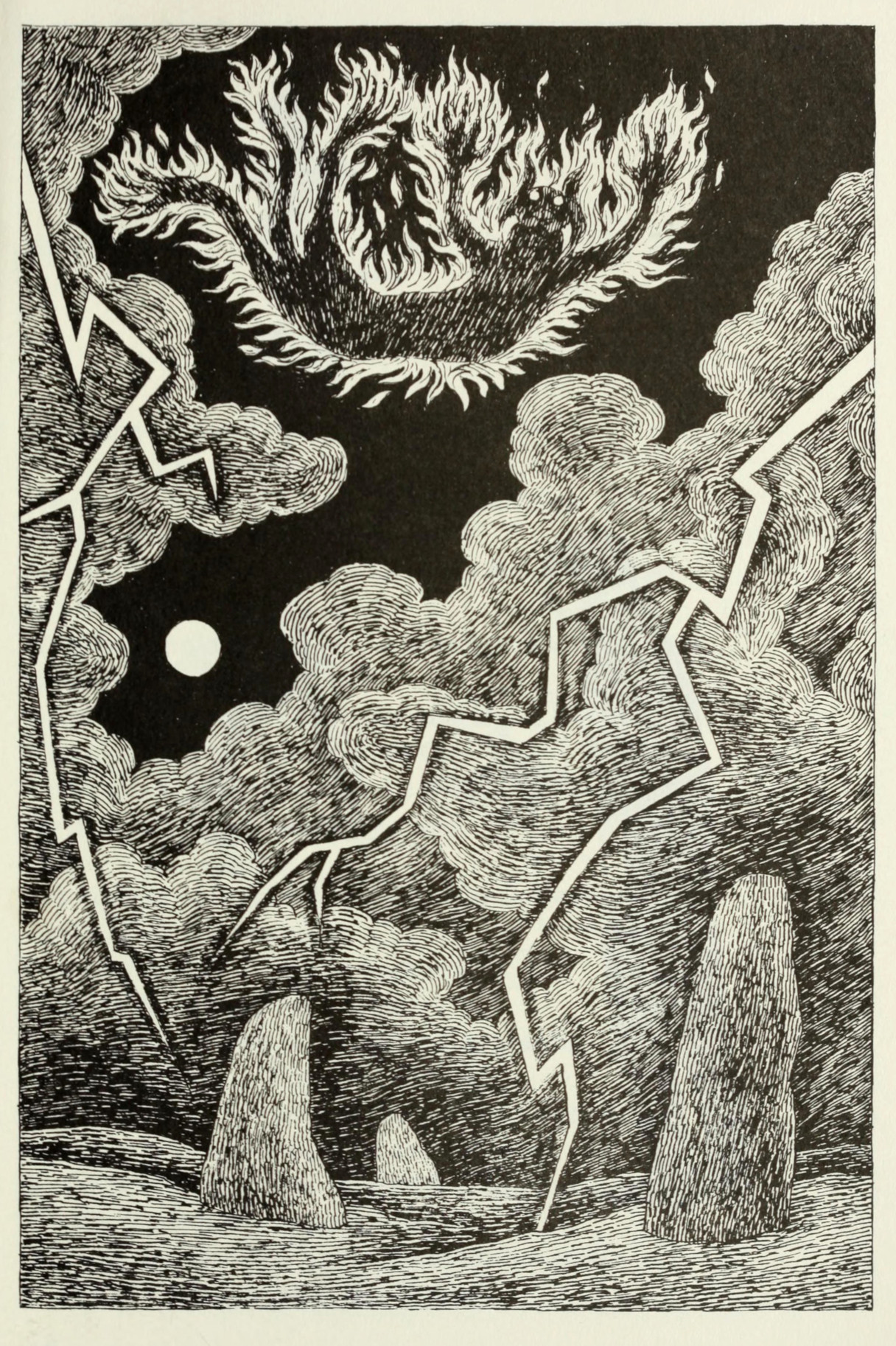
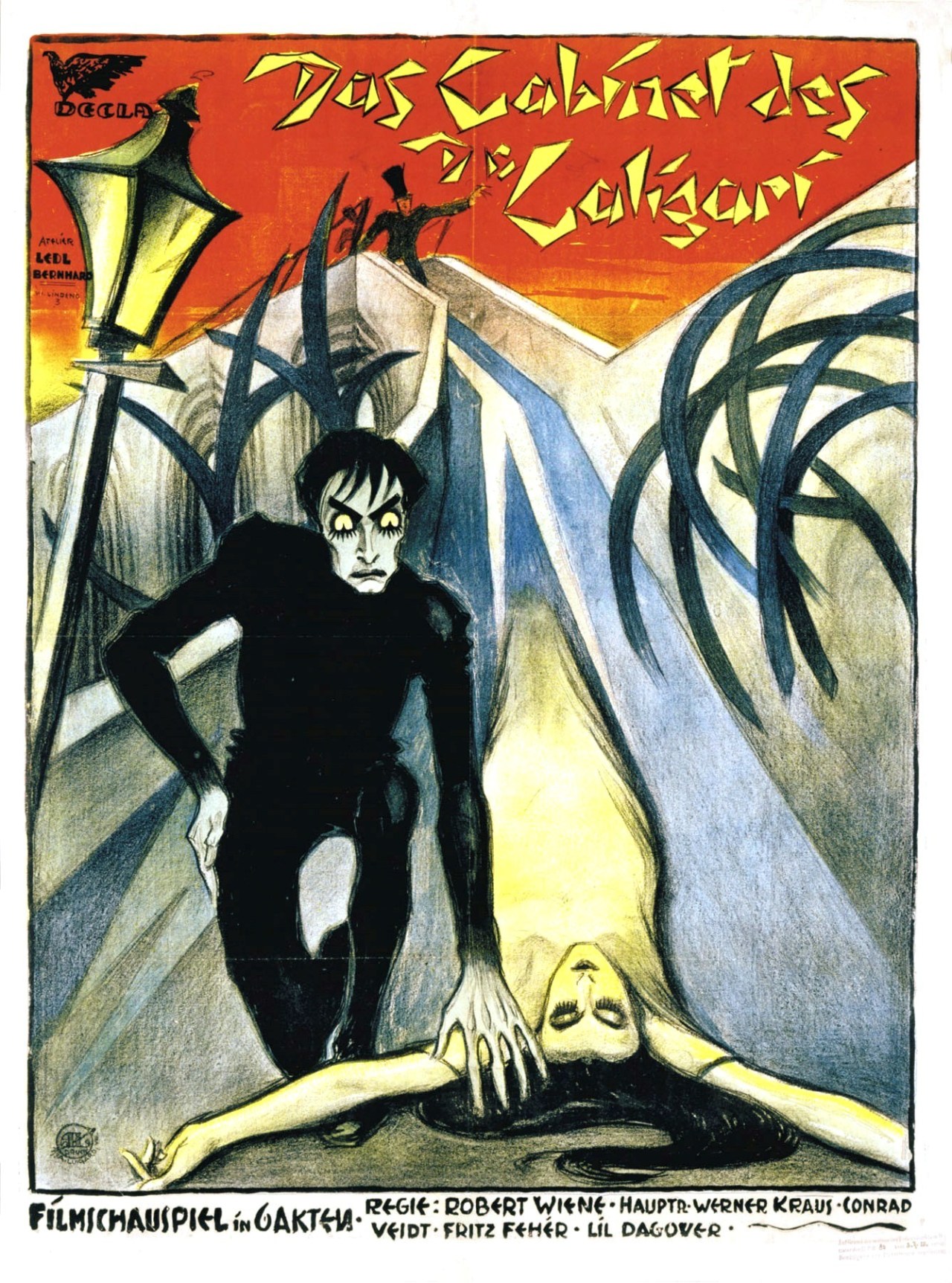
I incidentally once dressed up for Halloween as one of Veidt’s earliest screen roles – the somnambulist in The Cabinet of Dr. Caligari (1920).
Besides Powell & Pressburger – and of course Kubrick – the sunset at Stenness also made me think of Edward Gorey’s drawing of Firefrorefiddle, the Fiend of the Fell for TS Eliot’s Old Possum’s Book of Practical Cats (1939) and “The Mathematician’s Nightmare” from Bertrand Russell’s Nightmares of Eminent Persons and Other Stories (1954).
Related News
- Drought and Drone Reveal ‘Once-in-a-Lifetime’ Signs of Ancient Henge in Ireland, The New York Times, 13 July 2018.
- Saving Scotland’s Heritage From the Rising Seas, The New York Times, 25 Sept 2018.
Binomial Coefficients and Villainy
Sherlock Holmes’s criminal archenemy Professor Moriarty was modeled on Hopkins mathematics professor Simon Newcomb (1835–1909).
“At the age of twenty-one [Moriarty] wrote a treatise upon the binomial theorem, which has had a European vogue,” and was “the celebrated author of The Dynamics of an Asteroid, a book which ascends to such rarefied heights of pure mathematics that it is said that there was no man in the scientific press capable of criticizing it” [from “The Final Problem” (1893) and The Valley of Fear (1914) by Arthur Conan Doyle].
At the age of nineteen Newcomb wrote an unpublished New Demonstration of the Binomial Theorem and was a celebrated expert on the dynamics of the solar system. He was also notoriously malicious. For example, he destroyed Charles Sanders Peirce’s career by secretly changing Hopkins president Daniel Coit Gilman’s mind about granting Peirce tenure, this after having been the favorite PhD student of Peirce’s father Benjamin Peirce at Harvard. (Newcomb was incidentally the maternal grandfather of Hassler Whitney.)
These and further similarities between Moriarty and Newcomb were first noted by Ronald Schorn in 1978, and the case for direct inspiration was convincingly made by Bradley Schaefer in 1993 (by arguing that Doyle would have known of Newcomb through close friend Alfred Drayson):
Sherlock Holmes and some astronomical connections, Journal of the British Astronomical Association, Vol. 103, No. 1 (1993), pp. 30–34.
The possibility of completing the square:
| Holmes | — | Moriarty |
| ⋮ | | | |
| CS Peirce | — | Newcomb |
is suggested by the existence of the book:
Umberto Eco & Thomas A. Sebeok (eds.), The Sign of Three: Dupin, Holmes, Peirce, Indiana University Press (1984).
References
-
Joseph Brent, Charles Sanders Peirce, A Life, Indiana University Press, Bloomington, 1998.
-
Prof Stephen Hawking: make me a Bond villain, The Telegraph, London, 1 Dec 2014. [via Jack Morava]
Afterword
I got onto this after lecturing on Bernstein polynomials and Bézier curves. The (constructive) proof of the Stone-Weierstrass approximation theorem in that case requires some finesse with binomial coefficients. To lighten the mood I made an off-the-cuff remark about Moriarty’s young interest in binomial coefficients, and the idea that a genuine rival for Holmes could have no background but mathematics. After lecture I started digging through some references and was led to Newcomb.
I later pointed out that, although Holmes scoffs when in their first meeting Dr Watson makes the comparison, Holmes was himself modeled on C. Auguste Dupin, who first appeared in “The Murders in the Rue Morgue” (1841) by Edgar Allan Poe (†1849 in Baltimore). [And Watson himself, ironically, on Poe’s anonymous narrator.]
Having begun the course with an analysis of the word “analysis”:
From the Greek ana·lysis=“up”·“to loosen”=“to loosen up”. To be compared with “dissolve”→“solve”. But not to be confused with anal·ysis—“anal” coming from “anus”, the Latin for “ring”. Which is relevant since it leads to the mathematical word “annulus”. And which illustrates that etymology is nonassociative: (ana)·(lysis)≠(anal)·(ysis). Don’t you think it’s a little strange, though, that the Greek and Latin are not entirely unrelated?
I ended with the opening of “Rue Morgue”:
The mental features discoursed of as the analytical, are, in themselves, but little susceptible of analysis. We appreciate them only in their effects. We know of them, among other things, that they are always to their possessor, when inordinately possessed, a source of the liveliest enjoyment. As the strong man exults in his physical ability, delighting in such exercises as call his muscles into action, so glories the analyst in that moral activity which disentangles. He derives pleasure from even the most trivial occupations bringing his talent into play. He is fond of enigmas, of conundrums, of hieroglyphics; exhibiting in his solutions of each a degree of acumen which appears to the ordinary apprehension præternatural. His results, brought about by the very soul and essence of method, have, in truth, the whole air of intuition.
The faculty of re-solution is possibly much invigorated by mathematical study, and especially by that highest branch of it which, unjustly, and merely on account of its retrograde operations, has been called, as if par excellence, analysis. Yet to calculate is not in itself to analyse. A chess-player, for example, does the one without effort at the other. It follows that the game of chess, in its effects upon mental character, is greatly misunderstood. I am not now writing a treatise, but simply prefacing a somewhat peculiar narrative by observations very much at random…
[As an aside, I visited Thomas Browne’s monument in Norwich this summer. His Hydriotaphia, Urn Burial, or, a Discourse of the Sepulchral Urns lately found in Norfolk (1658)—from which Poe’s epigraph is taken—is otherworldly.]
Observe that the opening paragraph of Poe’s manuscript did not survive to the printed edition:
“It is not improbable that a few further steps in phrenological science will lead to a belief in the existence, if not to the actual discovery and location of an organ of analysis.”
 [Moriarty, incidentally, had an associate named McTague in the 1899 play Sherlock Holmes, cowritten by Doyle and William Gillette. In fact, “Lightfoot” McTague appears in the 1916 silent film adaptation of the play, considered among the holy grails of lost films until a nitrate dupe negative was discovered mislabeled in the vaults of the Cinémathèque Française in 2014. For a far more cinematic appearance of a McTague in silent film, however, see Erich von Stroheim’s 1924 masterpiece film adaptation Greed of Frank Norris’s 1899 novel McTeague. [Is it a coincidence that McTeague and the Holmes play both date to 1899?] Seeing Greed at Eastman House inspired me to recreate one of its famous title cards—compare with the original and notice that the recreation even shakes like a projected film (the CSS for this relies on Bézier curves).]
[Moriarty, incidentally, had an associate named McTague in the 1899 play Sherlock Holmes, cowritten by Doyle and William Gillette. In fact, “Lightfoot” McTague appears in the 1916 silent film adaptation of the play, considered among the holy grails of lost films until a nitrate dupe negative was discovered mislabeled in the vaults of the Cinémathèque Française in 2014. For a far more cinematic appearance of a McTague in silent film, however, see Erich von Stroheim’s 1924 masterpiece film adaptation Greed of Frank Norris’s 1899 novel McTeague. [Is it a coincidence that McTeague and the Holmes play both date to 1899?] Seeing Greed at Eastman House inspired me to recreate one of its famous title cards—compare with the original and notice that the recreation even shakes like a projected film (the CSS for this relies on Bézier curves).]


